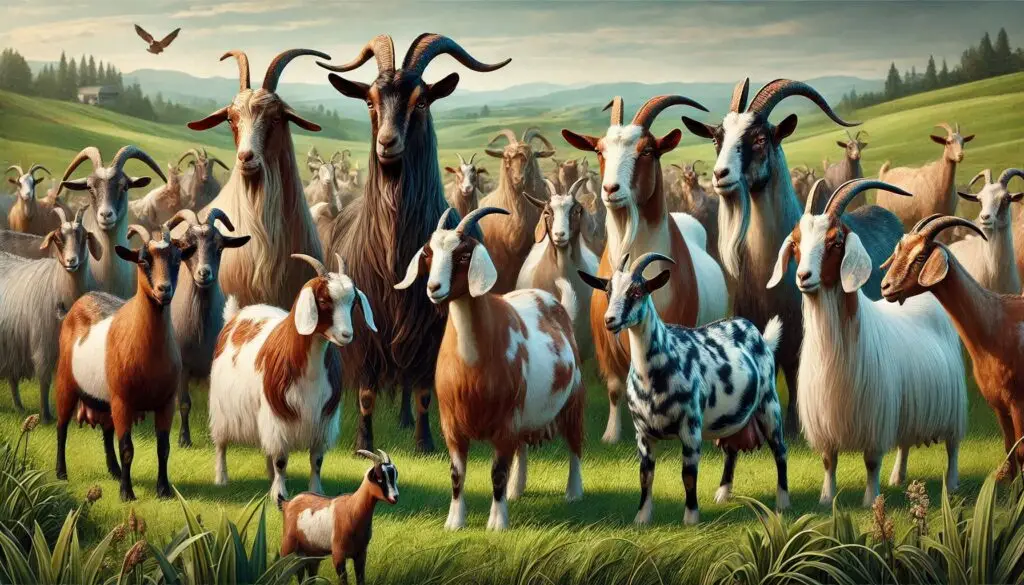Sheep Farming: A Comprehensive Guide to Sheep Breeds

Sheep farming is a vital part of agriculture worldwide. Farmers raise sheep for various purposes, including meat, wool, and milk production. Understanding different sheep breeds is essential for maximizing these outputs. In this article, we will explore various sheep breeds, their characteristics, and their benefits to farmers.
The Importance of Sheep Breeds in Farming
Why Choose the Right Breed?
Selecting the right sheep breed is crucial for successful farming. Each breed has unique traits that make it suitable for specific climates and farming practices. Some breeds excel in meat production, while others are better for wool or milk. By understanding these differences, farmers can make informed decisions that enhance productivity and profitability.
Factors Influencing Breed Selection
When choosing a breed, consider several factors:
- Climate: Some breeds thrive in cold climates, while others prefer warmer temperatures.
- Purpose: Decide whether you want to focus on meat, wool, or milk production.
- Management: Some breeds require more care than others. Consider your available resources.
Notable Sheep Breeds Around the World
Global Breeds
Hampshire
The Hampshire breed originated in South England during the 19th century. This medium-sized breed is known for its dual-purpose capabilities—producing both meat and wool. Hampshires have distinct white bodies with black faces and legs. They are known for their fast growth rates and superior carcass quality.
For more information about Hampshire sheep, visit American Hampshire Sheep Association.
Columbia
The Columbia breed was developed in the United States in 1912. It is a large-bodied breed primarily raised for meat and medium-wool production. Columbia sheep are hardy and adapt well to harsh environments. They are also increasingly popular for crossbreeding due to their desirable traits.
Learn more about Columbia sheep at Columbia Sheep Breeders Association.
Dorset Horn
The Dorset Horn breed hails from Dorset County in England. This small breed is notable for its ability to breed out of season, making it a favorite among farmers looking to maximize lamb production year-round. Dorsets are friendly and easy to manage, making them ideal for beginners.
For additional details on Dorset Horn sheep, check out Dorset Horn Sheep Society.
Polypay
Developed in the 1970s in the United States, the Polypay breed is a synthetic breed known for its prolificacy. Polypay ewes can produce two lamb crops per year, making them highly desirable for farmers aiming for increased productivity. They also exhibit good mothering instincts.
To learn more about Polypay sheep, visit Polypay Sheep Association.
Finnsheep
The Finnsheep originates from Finland and was introduced to the U.S. in the 1960s. This medium-sized breed is recognized for its high lamb survival rates and strong maternal instincts. Finnsheep are often used in accelerated lambing programs due to their prolificacy.
For further insights on Finnsheep, explore Finnsheep Breeders Association.
Indian Breeds
Nellore
The Nellore breed is native to Andhra Pradesh in India. Known for its tall stature and minimal hair coat, Nellore sheep are primarily raised for meat production. Rams typically weigh between 36 kg while ewes weigh around 28 kg.
To discover more about Nellore sheep, visit Indian Council of Agricultural Research.
Mandya
Originating from Karnataka, Mandya sheep are compact with coarse hair and are polled (hornless). Males weigh approximately 35 kg while females weigh around 23 kg. This breed is also raised mainly for meat.
For more details on Mandya sheep, refer to Karnataka Animal Husbandry Department.
Rampur Bushair
The Rampur Bushair breed comes from Himachal Pradesh and surrounding areas. These large animals have a black or dark brown face and produce good-quality carpet wool. Their weight can vary significantly based on environmental conditions.
Learn more about Rampur Bushair at National Bureau of Animal Genetic Resources.
Gurez
The Gurez breed is found in North Kashmir and is noted as one of the largest breeds in the region. Both sexes are polled with a white coarse fleece that provides good insulation against cold weather conditions.
For additional information on Gurez sheep, check out Sheep Husbandry Department Jammu & Kashmir.
Characteristics of Different Sheep Breeds
Meat Production Breeds
Certain breeds excel specifically in meat production due to their growth rates and carcass quality.
- Hampshire: Known for rapid growth.
- Columbia: Produces quality lambs with good market value.
These breeds offer excellent returns on investment when raised under proper management practices.
Wool Production Breeds
Wool-producing breeds provide high-quality fleece that can be processed into various products.
- Dorset Horn: Produces fine wool.
- Polypay: Offers decent wool alongside meat production.
Farmers focusing on wool should consider these breeds based on their fleece quality and quantity.
Milk Production Breeds
While not as common as meat or wool breeds, some sheep are raised primarily for milk.
- East Friesian: Known as one of the best dairy sheep breeds globally.
These breeds can be beneficial for farmers interested in diversifying their livestock operations.
Managing Sheep Farms Effectively
Basic Care Requirements
Caring for sheep involves several key practices:
- Feeding: Provide a balanced diet rich in nutrients.
- Housing: Ensure proper shelter from harsh weather conditions.
- Health Management: Regular veterinary check-ups are essential.
- Breeding Practices: Implement effective breeding strategies to improve herd quality.
Pasture Management
Healthy pastures contribute significantly to sheep health and productivity:
- Rotate grazing areas to prevent overgrazing.
- Monitor pasture quality regularly.
Proper pasture management enhances both animal welfare and farm profitability.
Record Keeping
Maintaining accurate records helps manage your flock effectively:
- Track breeding dates.
- Monitor health records.
Good record keeping aids in making informed decisions regarding flock management.
Economic Benefits of Sheep Farming
Profitability Factors
Sheep farming can be highly profitable when managed correctly:
- Market Demand: There’s a consistent demand for lamb and wool products.
- Low Start-Up Costs: Compared to other livestock, starting a sheep farm requires less capital investment.
- Diverse Income Streams: Farmers can sell meat, wool, milk, or even breeding stock.
Government Support Programs
Many governments offer support programs for livestock farmers:
- Grants for infrastructure development.
- Subsidies on feed or veterinary services.
Check with local agricultural departments to explore available resources that can enhance your farming operation.
Conclusion: Choosing the Right Breed Matters
In conclusion, understanding different sheep breeds is crucial for successful farming operations. Each breed offers unique advantages based on specific farming goals—be it meat production, wool quality, or milk yield. By selecting the right breed and implementing effective management practices, farmers can maximize their productivity and profitability in the competitive world of agriculture.
More from Livestock Production and Management:
https://wiseias.com/precision-dairy-farming/
https://wiseias.com/pricing-policy-personnel-management/






Responses